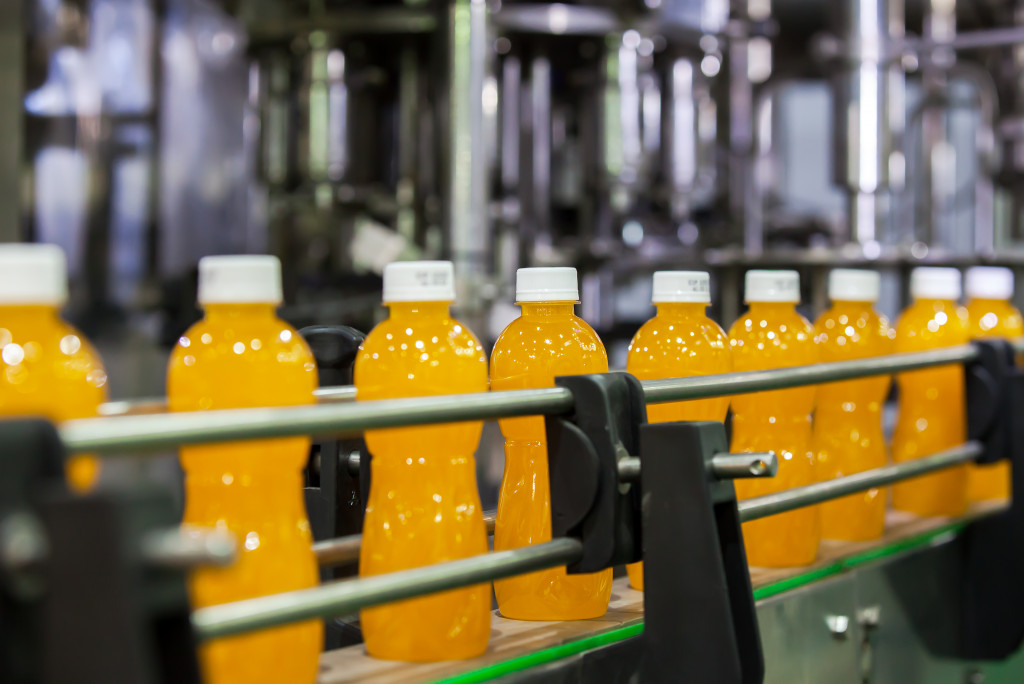- Automating processes, such as robotics and enterprise resource planning (ERP) software, can help streamline operations and reduce labor costs.
- Sourcing ingredients from reliable suppliers is essential for high-quality food products, so consider sourcing locally to reduce costs and time.
- Streamlining the supply chain process can help reduce expenses related to storage and transportation costs.
- Invest in research and development to develop ideas, explore different packaging options, and partner with businesses to expand your range.
Running a food manufacturing business can be challenging. Numerous factors affect profitability, such as sourcing ingredients, production costs, and distribution. And as the industry evolves, food manufacturers must continually innovate to remain competitive. But with the right strategies and techniques, you can increase your profits and run a more successful food manufacturing business.
Here are some strategies to help you do just that:
1. Automation
One of the most important aspects of running a successful food manufacturing business is automation. Automation allows you to streamline your production process, save time, and reduce labor costs. Investing in automated equipment can help you increase productivity and reduce errors in production. Additionally, automating specific processes can help ensure quality control throughout your operation. Look into the following technologies that can help you:

a. Robotics
Robotics can automate almost any task in the food manufacturing process, from packaging to palletizing. Some robots can even be programmed to detect quality defects in the product.
b. ERP Software
Enterprise resource planning (ERP) software can help you streamline operations and cost-effectively manage resources. ERP software can track inventory levels, automate ordering processes, and monitor production costs.
c. Sensors and Wearables
Sensors can measure temperature, humidity, oxygen levels, and other factors that could affect food quality. Your employees can also wear sensors to monitor their own safety and well-being.
d. AI and Machine Learning
Artificial intelligence (AI) and machine learning can improve product quality, detect defects, manage inventory levels, and predict customer demand. Some AI systems can even analyze customer feedback and suggest improvements.
2. Sourcing
Sourcing ingredients from reputable suppliers is essential for producing high-quality food products. It’s vital to ensure that your suppliers meet industry standards for food safety and quality control. Consider sourcing food products locally. So if your business is in the Philippines and your process requires frying oil, for example, you can purchase it from a local manufacturer of corn oil in the Philippines instead of one located further away. This can help reduce shipping costs and lead times.
Additionally, having a direct relationship with your suppliers can help increase efficiency and reduce costs in the long run. Many suppliers offer discounts for bulk orders and can be more flexible with their terms. You can also negotiate better prices and arrange for early payment discounts.

3. Streamline Your Supply Chain
Another critical factor for success is streamlining your supply chain management. This includes sourcing ingredients from reliable suppliers at competitive prices and having efficient distribution methods. Streamlining this process will enable you to get the best possible deals on ingredients and supplies and deliver products to customers faster. It will also help you cut back on expenses related to storage and transportation costs — both of which are significant contributors to overall operational costs.
Many food manufacturers are now using technologies such as blockchain, radio-frequency identification (RFID), and the internet of things (IoT) to improve supply chain processes. These technologies allow you to track your inventory levels and orders in real time, allowing for better decision-making and quicker response times.
4. Innovation
Food manufacturers must continuously innovate to stay ahead of the competition. This means introducing new products, improving existing ones, or finding ways to reduce costs and increase efficiency. Invest in research and development to develop new ideas and test them out on a limited scale before introducing them to the market. You can also explore different packaging options or partner with other businesses to expand your product range.
Some manufacturers also invest in marketing and branding to increase their customer base. This can help you reach a wider audience, create brand loyalty, and boost your profits. You can also develop online ordering systems, loyalty programs, and promotional campaigns to attract more customers. Remember that innovation is a long-term strategy, so staying ahead of the curve and continuously updating your products is essential.
Running a profitable food manufacturing business requires careful planning and execution of strategies that are tailored to meet the needs of your particular market or industry. Automating specific processes, sourcing ingredients from reliable suppliers, streamlining your supply chain management, and innovating new products are all key strategies to help you increase profitability. You can stay competitive in the long run with the right approach and the right technologies.




